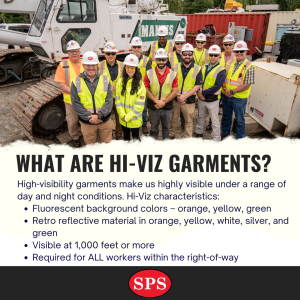
I-90/I-95 Newton-Weston Project Update – June 2024


DYK: Two workers are killed every month in trench collapses. In trenching and excavation work, trench collapses, or cave-ins, pose the greatest risk to workers’ lives.
When done safely, trenching operations can reduce worker exposure to other potential hazards including falls, falling loads, hazardous atmospheres, and incidents involving mobile equipment.
In general, an excavation is any man-made cut, cavity, trench, or depression in an earth surface, formed by earth removal. A trench is an excavation that is made below the surface of the ground. In general, the depth is greater than the width, but the width of a trench (measured at the bottom) is not greater than 15 feet. Proper precautions should be taken to protect workers and the public from hazards created by trenching and excavation.
In trenches 5ft deep or greater, a protection system involves 3 S’s: Sloping, shoring and shielding – Sloping involves cutting back the trench wall at an angle inclined away from the excavation. – Shoring requires installing aluminum hydraulic or other types of supports to prevent soil movement and cave-ins. – Shielding protects workers by using trench boxes or other types of supports to prevent soil cave-ins.



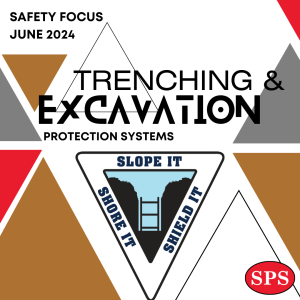
The Belden G. Bly Drawbridge Project achieved a significant milestone yesterday. The Team performed a successful test opening of the new bridge at around 6:00pm.
Work began on this project in January of 2021. The bascule span erection work was restricted to occur during a USCG Saugus River channel closure between 2/1/24 and 5/15/24. The SPS Team, MassDOT and our Subcontractor partners worked tirelessly to achieve this milestone.
Congratulations to the entire Team.
Special thanks to Savanna Media for producing this video.
SPS celebrated Safety Week May 6th-10th by hosting events at various SPS job sites throughout the week, capping the celebrations off at the SPS Yard in Salisbury.
At SPS, every voice is valued and encouraged to speak up for safety.
Special thanks to the following vendors who joined us: Milwaukee Tool; Sales Solutions FallTech; GT Safety Products, Inc.; Lexie’s Burger Bus; Hilti; I&I Sling Inc.; LEAN Mass. Laborers Benefit Funds; PromoCentric; Saf-Gard Safety Shoe Company; Red Wing Shoes; STUDSON; United Rentals; TM Inspections; SafeSmart Access
Falls from one level to another are among the leading causes of severe injuries and deaths among workers in the United States. And to add insult to injury, no pun intended, many workers who were injured or killed were wearing a full body harness as part of a personal fall arrest system, but their full body harness was not properly worn or adjusted, and it failed to work.
You’ve got your full body harness on and properly adjusted, and you’ve attached the proper end of your lanyard to the back D-ring on your harness. The next step is to attach the other end of your lanyard to an anchor point. But selecting the wrong anchor point could have some painful, or even deadly, ramifications. That means you must put some serious thought put into what you hook off to with your lanyard.
Lanyards (or self-retracting lifelines) reduce the arresting forces on a worker during a fall. The standard lanyard length could vary. Follow these guidelines for safe use of lanyards…
Falls are a leading cause of construction injuries and fatalities. Workers can fall from ladders, scaffolds, vehicles, heavy equipment, aerial lifts, platforms, and roofs, and through holes or openings in floors or roofs. Guardrails can prevent a fall.
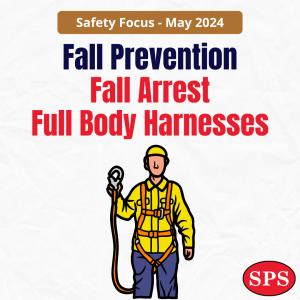
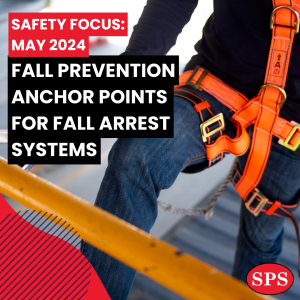
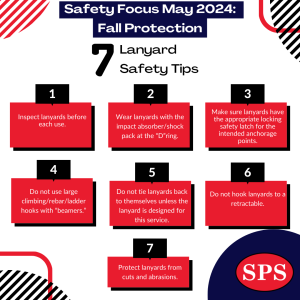
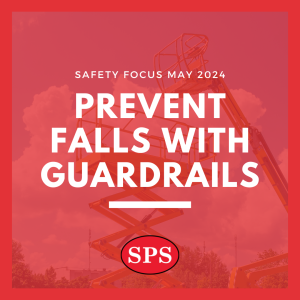
It’s National Work Zone Awareness Week. What many fail to recognize is the vast majority of people killed in work zone crashes are motorists and their passengers. In 2021, 778 drivers and their passengers died in work zones (based on NHTSA FARS data), making it all the more important for drivers to slow down and stay focused while approaching and passing through a roadway work zone.
Wednesday, April 17, 2024 is Go Orange Day. Go Orange Day provides an opportunity to unite in wearing orange to show support for the men and women who work tirelessly to keep our roads safe.
It’s no surprise that distracted driving is dangerous, but did you know it claimed 3,308 lives in 2022? NHTSA leads the national effort to save lives by preventing this dangerous behavior. Get the facts, get involved, and help us keep America’s roads safe.



In general, there are two types of respirators Air Purifying and Supplied Air. Respirators work by either filtering particles from the air, chemically cleaning (purifying) the air, or supplying clean air from an outside source.
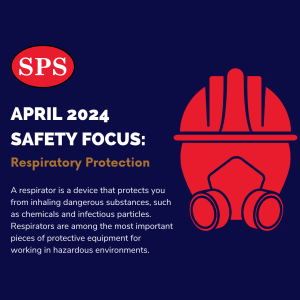
Respirators should be used whenever it is necessary to protect the health of an employee from contaminated air. Also, when viable engineering controls are not available. With the correct cartridges these respirators can be used for the following…
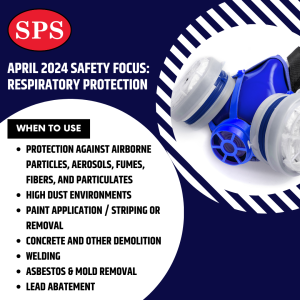
Respirators are not always appropriate or safe for use, specifically in the following tasks/scenarios…
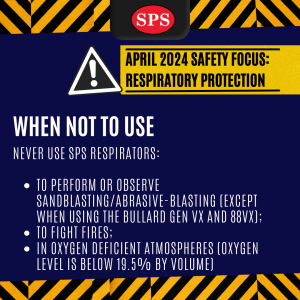
Do you know there’s a killer on the job that you probably meet face-to-face every day? The common, ordinary ladder. Ladders are involved in many accidents, some of which are fatal. Your life literally can depend on knowing how to inspect, use, and care for this tool.
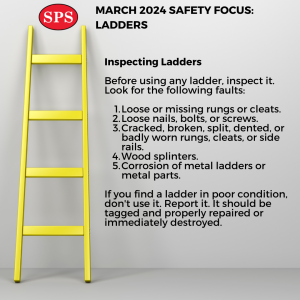
This month’s SPS Safety Focus is all about Traffic Control.
Did you Know: Every year there are many accidents resulting in injury and damage due to carelessness when backing vehicles. Incidents involving backing vehicles are not uncommon among worker-on-foot fatalities. Backing accidents are preventable.
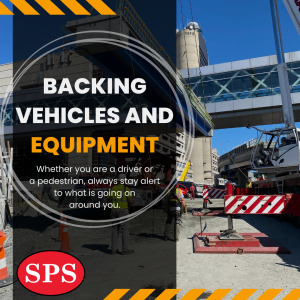
Work zones on roadways are increasingly dangerous places, both for workers and for those traveling through them. Using barricades and warning devices at job sites directs traffic flow and helps to ensure the safety of motorists and workers.
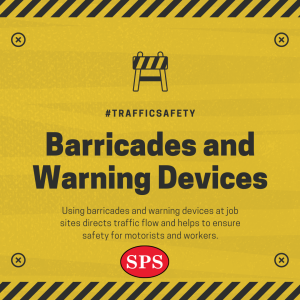
These garments are required for ALL workers within the right-of-way. Here are some facts about what makes something “hi-viz”:
